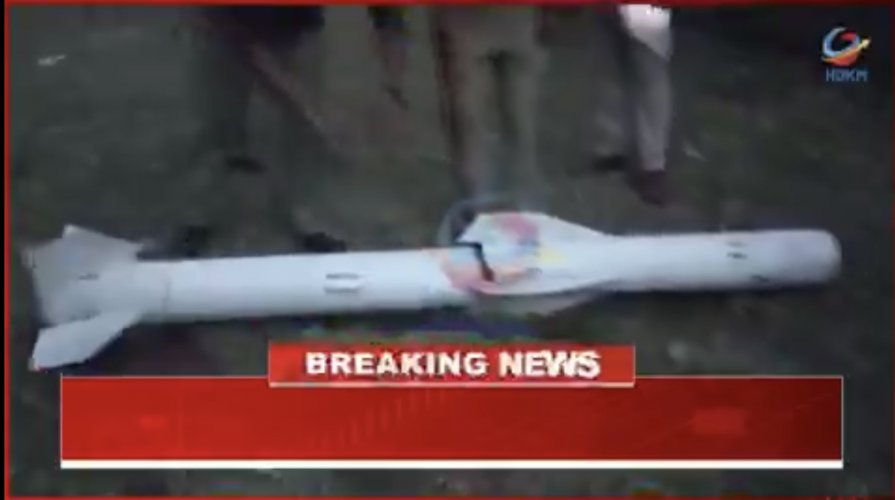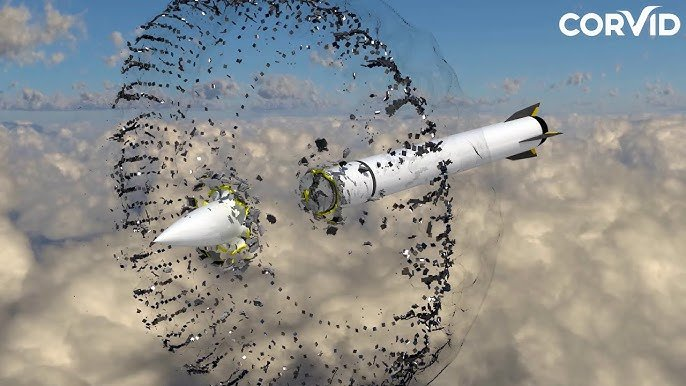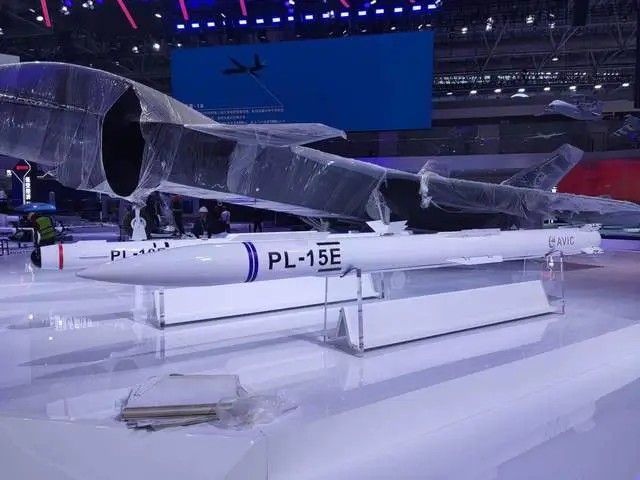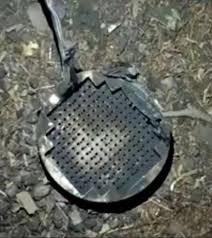sf7pakistan
ACCESS: Restricted
- Joined
- 7 August 2019
- Messages
- 37
- Reaction score
- 115
My bad, added a Google translated version of the screencap. Thanks for reminding meThat may not be english for everyone to read...
My bad, added a Google translated version of the screencap. Thanks for reminding meThat may not be english for everyone to read...
Ghost of Kashmir /sThe Pakistani pilot claimed he shot down 21 IAF fighter jets.
The vehicle in the image is a 4x4 truck. HQ-9 Command Posts are on 8x8s.For comparision
Cant see shit honestly so thats why im saking. So they just hit a cargo truck?The vehicle in the image is a 4x4 truck. HQ-9 Command Posts are either on 6x6s or 8x8s
Cant see shit honestly so thats why im saking. So they just hit a cargo truck?
ThanksLooks like it for now, plus in the tweet I added in my reply it seems that the CP trucks have a ramp in the back and not a door.
View: https://x.com/squatsons/status/1920469959278248046
@Galaxy is likely an Indian. The audio doesn't match the lips. Likely an edited video. It's literally been 2 mins since we talked about spreading misinformation.Ghost of Kashmir lmao
@Galaxy is likely an Indian. The audio doesn't match the lips. Likely an edited video. It's literally been 2 mins since we talked about spreading misinformation.
I think they did pretty good being stay within border and fire stand-off ground attack munition.Probably, it's newer and the French really aren't known for bleeding edge electronics.
What I don't really get is how poorly designed this operation was. The Indians should have access to advisers who can train them better than this clown car of an operation.
Yes. they have Link 17. I don't think J-10CE can do this alone since the attack window is pretty small.You guys think Pakistan's SAAB Erieye awacs are integrated with their J10C to aid in guiding the PL15?
I guess the IAF needs more awacs then. India is 7 times larger than Pakistan but only has half the awacs fleet size.I think they did pretty good being stay within border and fire stand-off ground attack munition.
What got them is they totally underestimate the PAF kill chain range.
Correct me if I'm wrong, the Rafale is down on the way home very close to the base which is 90km from the border.
Most likely it's a surprise attack leave the pilot very little reaction time.
Yes. most likely with Link 17. I don't think J-10CE can do this alone since the attack window is pretty small.
Don't know if true but I have the impression IAF still use voice communication on AWACS due to not able to incorporated jets from Russia, French and UK.I guess the IAF needs more awacs then. India is 7 times larger than Pakistan but only has half the awacs fleet size.
I read somewhere that PAF awacs/ew blinded the IAF jets in 2019 when scoring a kill or two...
I wanna say that can't be true. But the Indians did drown/damage a brand new nuclear sub a couple years back by leaving the hatch open.Don't know if true but I have the impression IAF still use voice communication on AWACS due to not able to incorporated jets from Russia, French and UK.
@Galaxy is likely an Indian. The audio doesn't match the lips. Likely an edited video. It's literally been 2 mins since we talked about spreading misinformation.

There are probably many more that have yet to be recovered.
It appears that the warhead and seeker are missing.
这是因为它要么在未能击中目标后自毁(不太可能,因为情况更糟),要么在未能击中目标后滑翔下降时,弹头在接触地面时脱落。这是基于基本完好的情况,在末期,火箭发动机烧毁,导弹使用动能,这意味着它最终会滑翔返回地球。



View attachment 769290
View attachment 769291View attachment 769292
Hmm... The relative position of the missile wings in the wreckage pictures can be compared. Considering that the PL-15 uses a continuous rod warhead, personally, I think the wreckage in the picture is the propulsion section left after self-destruction. Of course, time will tell. If they obtain the complete warhead section, there is a high probability that they will display it in the media someday, thus undermining the confidence of the Pakistanis or suggesting that they can reverse engineer China's technology to gain an advantage.
The missile would disintegrate into small pieces if the warhead exploded.
View: https://x.com/TheDeadDistrict/status/1920714175082348815View attachment 769290
View attachment 769291View attachment 769292
Hmm... The relative position of the missile wings in the wreckage pictures can be compared. Considering that the PL-15 uses a continuous rod warhead, personally, I think the wreckage in the picture is the propulsion section left after self-destruction. Of course, time will tell. If they obtain the complete warhead section, there is a high probability that they will display it in the media someday, thus undermining the confidence of the Pakistanis or suggesting that they can reverse engineer China's technology to gain an advantage.

Why isn't there any IAF missile recovered in Pakistan?
I am not sure who Galaxy is (nor should anyone care) but aren't we glad you joined the forum just in time for this thread.@Galaxy is likely an Indian. The audio doesn't match the lips. Likely an edited video. It's literally been 2 mins since we talked about spreading misinformation.
@AndersJ : Sadly, all Credible sources from French, US, Indian and Pakistani converge around a Rafale brought down by a Chinese fighter, identified as a J-10 and at least another airframe (that could well be a drone).
No credible source has accredited the thesis that a plane collided with a lucky bullet or a secretly adorned PAF Pigeon...
Losses are sustained at war. Nobody with a sane mind would draw such hasten conclusion that Western systems are irrelevant. First, it's a French fighter build by a company that make a line selling particular systems not shared with other allies, something more or less true. Second, the 1 hours mass BVR dogfights with no kill on the Indian side suggest very strict RoE probably irrelevant with the tactical situation.
Then there is the apparent results that turns a said so surprise reprisal raid, something that usually favors the attacker, such a one sided defeat, at least on the air to air aspect (let's remind that the IAF reached all its targets with precision, something that haven't been contested, at least to my knowledge).
It is important to understand what happened there. Trying to hide such results under a patriotic cover just won't help, something that History tells us results only in more unsuited blood spill.
There is a time for the superlative marketing lines and an other for a deep dive into hard work, research and, beyond all, modesty.
Why isn't there any IAF missile recovered in Pakistan?
The same was for the Western, which struggled to even produce artillery shells (and was forced to buy old Soviet equipment for overcharged prices...)The fact is that the war in Ukraine has proven a disaster for Eastern manufactured military systems
I think you missed the main point I was making: What I was saying was that even if a Rafale has been lost, this has zero value because it is statistically insignificant. True, it could have been brought down in a well-orchestrated BVR engagement which mirrors the technological capabilities of both sides. On the other hand it could also have been brought down by incompetence or hubris. We simply don’t know yet. The only thing we do know however is that you need much more data than that to draw any conclusions:
The type of data that three years of conflict in the Ukraine has given us, and where we definitely can see what Russian gear can, or as we now know, cannot accomplish. And this time the Russian can’t blame the operators like they have done in all previous clashes, e.g. in the Middle East, where their gear has come up short again and again. So this leaves us with the Chinese stuff. Well the technology behind that, where does that originate? Sure, they are gradually weaning off a reliance on Russian technology and are now pouring massive amounts of R&D into their military but I don’t think many of us are very impressed by the results we’re seeing so far.
The fact is that the war in Ukraine has proven a disaster for Eastern manufactured military systems given that this conflict has highlighted with glaring clarity that the emperor has no clothes. For example, the Kinzhal used to be touted as a “hypersonic and impossible to intercept” missile until Patriots started shooting it down. And now in this India versus Pakistan conflict the J-10 and SP-15 are hailed in a similar manner, with the implications that French systems are somehow outdated because of the loss of a single Rafale? Give me a break…..
Finally, it is as you say important to understand what is happening and not trying to hide such results under “a patriotic cover” or “superlative marketing”. However, when reading some contributions in this thread connected to the performance of Russian and Chinese systems, I have to say that the old English saying pot calling kettle black comes to mind.
I don’t know what happened with the Rafale and I think it’s still one of the best none LO platforms but we were told for years how amazing the Spectra was and that it can survive in any environment and can easily dominate even J-20s however this time it didn’t save it.

At 4am on Wednesday, China’s ambassador to Pakistan hurried to the foreign ministry to celebrate an unprecedented military success.
Pakistan had reportedly shot down several Indian aircraft in the hours before using Chinese J-10C fighter jets.
“Our jet fighters… shot down three Indian Rafales, three Rafales [that] are French,” Ishaq Dar, Pakistan’s foreign minister, told parliament on Wednesday. “Ours were J-10C.”
The Chinese delegation, roused from their sleep by the outbreak of conflict between two nuclear-armed nations, was thrilled with the success of the Pakistani defence, Mr Dar said.
“Being a friendly nation, they expressed great happiness.”
India has not officially responded to reports that it lost as many as five fighter jets. But the apparent involvement of Chinese aircraft in shooting down a Rafale has ricocheted through defence circles – and sent stock in its maker, Chengdu Aircraft Corporation, surging by as much as 20 per cent.
Until now, Chinese weaponry had not been field-tested against Western-made systems like the Rafale. The Indian Air Force (IAF) operates a fleet of 36 Rafale F3Rs, the most advanced model of the aircraft.
A French intelligence source confirmed to CNN on Wednesday that at least one had been shot down, marking the first time a Rafale has been lost during combat.
In an official statement, China’s foreign ministry said it was “not familiar with the matter” when asked whether Chinese jets were involved in the skirmish.
Later on Thursday evening, a US official told Reuters that there was “high confidence” a J-10C had shot down two Indian fighters, using air-to-air missiles.
That appeared to confirm the aircraft first known “kill”, having entered service in its earliest form in 2003. It has been described as a “4.5 generation fighter”, like the British Eurofighter Typhoons and almost at the level of fifth generation systems like the US-made F-35.
Hu Jixin, the former editor of the Chinese state-owned Global Times, said the battle showed that “China’s level of military manufacturing has completely surpassed that of Russia and France”, adding that Taiwan should feel “even more scared”.
Defence analysts remain cautious of reading too much into the technological battle between the two systems. Pilot error, or the rules of engagement, could have contributed to the Indian Rafale’s demise.
But open-source intelligence analysts are poring over images of the wreckage of a Chinese-made PL-15 missile, broadcast on Indian television and shared on social media.
The missile, which is carried by the J-10C, has never been used in combat before. But its ability to fire at targets far beyond the visual range of pilots appears to fit with the outlines of the clash on Wednesday morning.
Neither Pakistani nor Indian aircraft crossed the border, engaging instead in a “stand-off” conflict at a distance of more than 100km at times. The wreckage of a Rafale was discovered near the city of Bathinda deep inside India, according to multiple open-source analysts.
China’s development of the PL-15 prompted the US military to invest in a missile specifically designed to outrange it.
The PL-15E, the version exported to the Pakistani armed forces, can travel up to 145km, somewhat less far than the domestic equivalent.
Chinese military observers have long viewed it as a “very capable missile”, said Fabian Hoffmann, a missile technology researcher and non-resident fellow of the Centre for European Policy Analysis.
“But obviously [if a hit is confirmed] this is now a very public demonstration of the prowess of Chinese military aerospace technologies” that “carries outside the bubble”.
“This is another point of indication that, if there was a Taiwan conflict, you probably should not assume that Chinese technology would fail at the same rate as Russia’s during the war in Ukraine.”
On April 29, with cross-border tensions rising, Pakistan’s army published a YouTube video showcasing its military arsenal.
In the video, a Chinese-made JF-17 Block 3 fighter jet, less advanced than the J-10C, can be seen equipped with PL-15 missiles. The combination offers “potent punch”, a caption reads.
For pilots in the Pakistani Air Force, the PL-15 missile has several advantages. Once fired, it has a large rocket booster that briefly propels the projectile to above Mach 5, or hypersonic, speeds.
In the middle of its flight, it is guided to target by an active electronically scanned array (AESA) radar that can be held on the launch system or a separate vehicle. Close to the target, it switches on its own AESA radar, locks on, and homes in with deadly accuracy.
A dual-pulse motor means that, after the initial blast falls away, a second burst of speed can be generated within 10 or so kilometres from the target.
“Because they are very, very fast, they basically have what you call a ‘no-escape zone’,” Mr Hoffmann said.
The switch from the first radar system to the missile’s onboard version also allows the jet that launched it to turn away from the target and flee any counterfire.
“There’s survivability for the [launch] platform, but also lethality for the [missile] itself.”
When India and Pakistan clash, so do their military backers. In recent years, the two nations have rapidly diverged in terms of where they source their weaponry.
Now, Islamabad buys the vast majority of its arms from China. Some 82 per cent of imports between 2019 and 2023 came from its “iron brother”, according to the Stockholm International Peace Research Institute (SIPRI), which tracks global arms flows.
Imports from the US, meanwhile, have collapsed.
At the same time, Delhi has stepped up arms purchases from Western allies and reduced its reliance on Russia. Since 2006, purchases from France, Israel and the US have surged. Imports from Moscow have fallen from 75 per cent of the total to 36 per cent, according to the SIPRI.
“The big advantage the Pakistanis have is that their primary weapon supplier is China,” said Dr Walter Ladwig, an associate fellow at the Royal United Services Institute, a London-based think tank.
“The Indian defence budget is bigger on paper, the modernisation budget is bigger.”
But Beijing “delivers”. It has rapidly supplied Pakistan with armour, a jointly developed fighter jet (in the form of the JF-17 Block 3) and missile systems.
For various reasons, India’s main suppliers, Russia and France (who provide 36 per cent and 33 per cent of imports respectively) have been slower to fulfil their orders, said Dr Ladwig. India’s air force is “still operating these antiquated MiGs”, he added.
China’s foreign ministry has urged both sides to exercise restraint and avoid a full-scale war. But there will be some in Beijing hoping for further, explosive field tests.
Likely warhead and seeker removed for evaluation, the airframe shown to the media
 This photo is making some rounds on the internet and claiming it's the aesa seeker of one of the PL15s... (I'm not sure but I also don't know what an a2a aesa looks like.)
This photo is making some rounds on the internet and claiming it's the aesa seeker of one of the PL15s... (I'm not sure but I also don't know what an a2a aesa looks like.)Admittedly these are pretty hard to find. They are not as easy to spot as flaming aircraft wreckages. The fact that we found three or four PL-15s so quickly is testament to just how many Pakistan fired during engagement.

India did claim to hit 9 sites inside Pakistan that led to the supposed aerial engagement between the two. That suggests that they may not be forbidden to engage Pakistanis.I wondered the same. Surely the Pakistani side would show evidence of said missiles. My guess is India didn’t fire any missiles due to inept and incompetent high ups? Could be wrong but seems like they are generally forbidden to fire at Pakistani aircraft while the Pakistanis are trigger happy and more than willing and happy to shoot first.
View: https://x.com/OSPSF/status/1920487818859557120?t=yT97w_GagEWfYgFY8PzqQx13WGN81877RDDTm0iX07A&s=19Why isn't there any IAF missile recovered in Pakistan?
